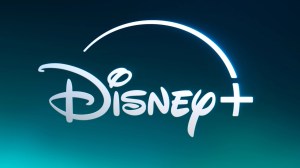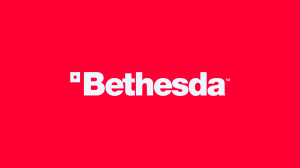A new Crisis is coming for the DC Universe. Spinning out of Death of the Justice League, the seven-issue monthly Dark Crisis event from writer Joshua Williamson and artist Daniel Sampere will trace back to the original crisis as an ancient destructive force known as the Great Darkness has been revealed to be behind some of the universe’s most instrumental and darkest moments. Now, Pariah will attempt to use that force to eliminate Earth-0 and restore his home world and the infinite multiverse, while the heroes who are left must face up to this ancient evil, though it remains to be seen if everyone is up to the task.
Videos by ComicBook.com
It’s a huge event that Williamson has described as being full of the huge cosmic battles but is also all about legacy. An event that’s not about reboots or retcons, Dark Crisis is about relationships between characters across DC’s history and is set to be an event that both respects and honors the past while carving out a huge future for the DC Universe and its heroes. ComicBook.com recently sat down with Williamson and Sampere to chat about the upcoming Dark Crisis event, what legacy means to them in terms of Dark Crisis, and how the event both honors and builds on the Crisis that began them all, Crisis on Infinite Earths.
What is Dark Crisis?
ComicBook.com: Dark Crisis. Everything about the event, even the name, sounds like this is going to be huge. Give me an overview about what Dark Crisis is all about.
Joshua Williamson: Oh, that’s tough. It is a very massive event. And to us, it’s really about the legacy of the DCU and really showing that all of these different pieces, all of these large aspects of the DCU, including the generational, like history, all the stuff with the sidekicks, also the legacy or the new heroes, all of these things are important and crucial to the DCU. And I wanted to use an event to showcase that. You know, when I started reading comics, I had all these really great entry points into the DCU with Tim Drake and Connor and Bart and Cassie. And I was able to kind of use those as, you know, my point of view, as a kid getting to it.
And even when you look at something like my introduction to Green Lantern was through Hal. But once Kyle came around and I got to kind of relearn the mythology through Kyle, it really opened up a lot of stuff for me as like a DC reader. I wanted to take all that energy and apply it to right now. And I wanted to show that at the end of the day, when the Justice League loses and they die, how does the world actually react to that? And how do all of these newer heroes we’ve introduced over the last like 30 years, not just someone who’s introduced recently, but all of these heroes, even characters like Dick Grayson, like how does he react now knowing?
What is Dark Crisis, cont.
And there’s a whole scene about this coming up where John and Dick are talking. John is panicking and, and Dick is just like, “You know your dad died, right? Like we went through this with him,” and he’s like, “Bruce has died.” And they started talking about what death means to them now. But the thing is, is that even though the heroes are dealing with it, one way, the villains of the DC are dealing with it in a much different way. And you have all these things kind of collide, like we’ve been building in Justice League Incarnate and Infinite Frontier sort of the multiversal piece of this. But then in things like Batman and Robin, Deathstroke, and some other stuff you’ll see, and we’ll kind of get some of that in the Shadow War. We’re building the grounded version of this. And there’s essentially what’s happening is the DCU gets attacked on two fronts from above and below basically. And so that’s, you know what it’s about. And to me, it’s really just sort of this, me getting an opportunity, working with someone like Daniel to tell a really big story in the DCU, starring all of these big pieces that we love.
Legacy
ComicBook.com: You mentioned the aspect of legacy and, again, you mentioned the sidekicks and the younger characters that, for people like you and I, were entry points into things. But the concept of legacy can also be a lot more than just the idea of passing the torch and picking up the pieces. There’s an emotional aspect to that as well. For you, in terms of that emotional piece of things, what does legacy mean in terms of Dark Crisis?
Williamson: Well, part of my initial pitch in this book was that legacy does mean different things to different people, right? Like Deathstroke sees legacy as something that is bad. Right? It is something that, that he doesn’t like. And I think someone like Black Adam is very conflicted on it, but somebody like Wally sees it as a good thing. Right? It’s a continuation of something that was built, and we can keep moving forward with it. And throughout the story, all the characters are going to exhibit different sides of what legacy means to them. Right? Like, to me, sometimes… I think there’s this quote from Hamilton where it’s like, “Legacy is a seed that you don’t get to grow, watch, grow.” Right? And I wanted to play around with a lot of those ideas.
And then you look at even the Superman movie, there’s a line that Jor-El has about how he’s sending Clark out there, but he doesn’t get to see what happens. That is his legacy. And he has to have kind of faith in that, you know? It’s funny you bring up what legacy means because that’s a big part of the story, because everybody comes at it from a different angle throughout the story, you know, like Dick has his version of it, John has his version of it, and you find these things kind of come into conflict with each other. And that’s a big part of the story is that how legacy can mean different things to different characters and how they end up having conflict over it.
Art and Crisis on Infinite Earths
ComicBook.com: One of the things I’ve been struck by so for… and for me, the comic book event that really solidified for me, “No, you’re going to be a comics fan your entire life,” was Crisis on Infinite Earths. A big piece of that for me was the art and Daniel, just looking at the things we have seen so far, I’m getting big Crisis on Infinite Earths vibes from that, like in a really cool way. How did you approach the art for Dark Crisis?
Daniel Sampere: Well, I’m really happy to hear that because it’s actually what I’m trying to do. I’m trying to contribute to the legacy Josh is doing in a way about the characters. And I’m trying to do legacy in the visual way also, not just about the plot of the series, but also the visuals need to pay some legacy for DC. I think that DC has a very specific and unique visuals for some kind of stuff. And especially on the crisis stuff, like you say on the crazy Crisis on Infinite Earth and Infinite Crisis, there’s a lot of potential of visuals to use from that.
And I’m trying to use all this that is established by George Perez, by Phil Jimenez and all these amazing people and use it to contribute to the legacy. But at the same time, trying to put something of my own, also I’m mixing with a more modern look of comic books and my own vision, but always trying to mix it with the past and the visual legacy that DC has. So, when the chance came up, the first thing I did was read, again, all this material. Read again, all the Crises and some of my favorite Evans, trying to study what those artists did to create this special feeling that you are saying about something so big, you know. And well, I’m trying to do my best.
Art and Crisis on Infinite Earths cont.
Williamson: Yeah. Daniel’s very thoughtful in every page and everything he’s doing. And he’s definitely, really tries to put a lot of heart into the pages and a lot of himself, but it is interesting to see where he finds the ways to, you know, it’s not just an homage. It’s like he’s saying, it’s not just an homage to it. It’s taking it to another level.
We actually got to talk to… A few months ago, we reached out to Phil Jimenez to ask, can we get his take on things, because he had worked on a massive event with Infinite Crisis. Can we show him stuff? Could we bounce some ideas off of him? And you know Phil is an amazing person and he was incredibly helpful in talking about this stuff and talking about the idea and what he had gone through trying to also do something that felt like Crisis on Infinite Earths level art, but also modern and elevated. And a lot of the stuff that Phil said to us definitely impacted the story, like a lot of the points that he made. So, it was really great that we were able to keep that legacy going and being able to look at those things and getting a chance to talk to those creators, to see if we could keep it going.
The biggest challenge
ComicBook.com: Speaking of legacy, like you said, it’s not really an homage. It really does feel like it’s embodying that concept of legacy. It’s this thing that’s impacted it, but now carrying it to a different place. What do you feel was the most daunting or challenging thing about Dark Crisis for you guys?
Sampere: Okay. Well, it’s a lot about what we’re saying right now. The main challenge for me was how can I do to maintain and keep the big scale for something like this, I’ll have to draw almost every character in DC. I need to study a lot of people. I want to draw them properly. Any of it, any of them, because maybe some character is not my favorite or I don’t pay attention that much for that character, but that character will be the favorite for someone, and they need to see their character well drawn and well represented in the story. So, the big challenge is how to do as crazy and big story like this that people can read it well with nice storytelling, but at the same time, doing it as big as possible and trying to look at the past and the legacy that Phil Jimenez and George Perez and all these people have put onto the table and, and take it to another level. Not level, another direction with my own vision, you know, keep moving the world. This is my biggest challenge.
Challenge, cont.
Williamson: I mean, to build off of that, I think honoring all of the characters, you know, it’s like, he just said like, all these characters are somebody’s favorite and so you want to make sure everybody has kind of their own moment. The characters aren’t just kind of thrown in for no reason. I think, you know, just trying to find a way to make this a different kind of event and different from all the other Crisis we’ve seen. That was the stuff that we were really looking at.
And I think that was hard for me to do and was the biggest challenge was to just keep… I mean, there’s a few things that were challenging. It was keeping all of it straight cause it’s an event that encompasses the entire DCU. So going through making sure we kept everything straight and looking at what everyone else was doing in their books and trying to find ways to honor everything, but also just to make sure that every character was in character. Right? Like going through and issue #1 has so many characters in it. I felt bad for Daniel, I had to constantly give him lists and it was even little things like Daniel would point out, he’s like, “Well, which characters can fly, and which ones can’t?” You know? And it’s like, “Oh yeah.” Like if characters are arriving on a scene, how would they actually arrive on the scene? Right? So, something as simple as that, but it can really speak to their character, you know? You want to make sure everyone was in character, and everyone has something to do.
And I think with an event like this, where it’s not going to be about reboots or retcons, and we’re not replacing anybody. It’s about showing that all of these heroes can coexist and how they’re all important. That was the kind of stuff that was really challenging. It’s just make sure all the characters were valued and honored throughout the story and making sure when you actually read it that it doesn’t feel like, “Oh, I read this before.” Like all that was really the pieces that were challenging. But all at the end of the day really fun. And Daniel’s been an amazing teammate with this.
Keeping it all organized
ComicBook.com: I can’t even imagine trying to keep that straight. I can’t imagine the amount of planning and organizing. I always joke that I have the “murder board” with the strings when I’m working on a big project. I can’t even imagine what it looks like when you’re playing with the entire DC Universe.
Williamson: Yeah. I have three whiteboards behind the computer right now that are all this stuff like trying to keep it all straight. And then a lot of it’s in my head, a lot of it’s in documents. A lot of it is just these character moments. And then going through and I have lists of hero… I have a document that is like, here are all the characters that are in Dark Crisis, and it is a very large document. It’s like, here are all the heroes, here are all the villains, part of the…
It’s not a secret because I think we’ve already talked about it a little bit publicly, I guess, is that part of this is Deathstroke has taken over the Secret Society of Super Villains. And so, he has this huge army and it’s not all of the most known characters. I’ll say that it’s a lot of the… I’ll say it, like the B and the C level villains and it’s a lot. And so having these lists is sharing those lists with Daniel and then other, it’s funny other writers that we talked to about this stuff and being like, you know, cause there’s crossover issues and one-shots coming too. So, it’s like, “Oh, here are the villains you can use.” It’s been a lot to keep track of and make sure again, everybody is in line with each other.
***
Dark Crisis kicks off in May.








